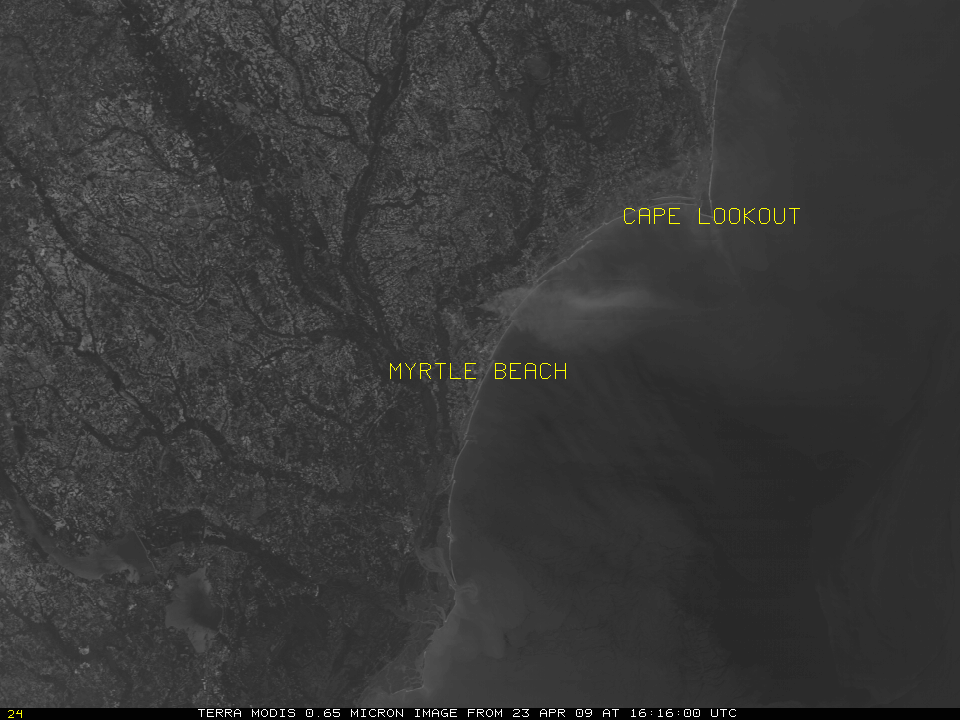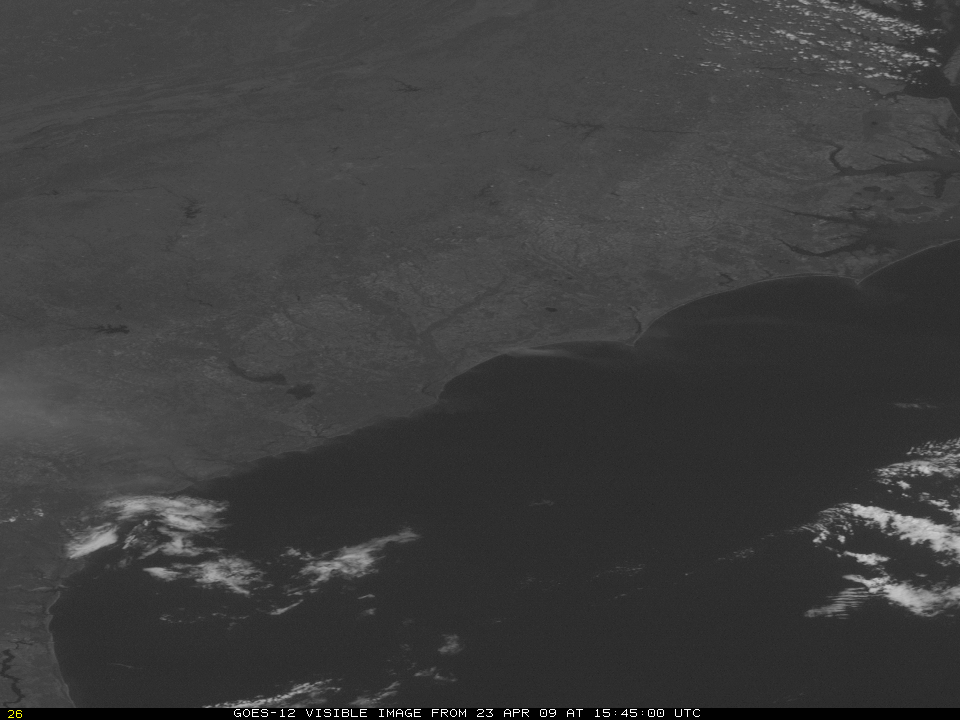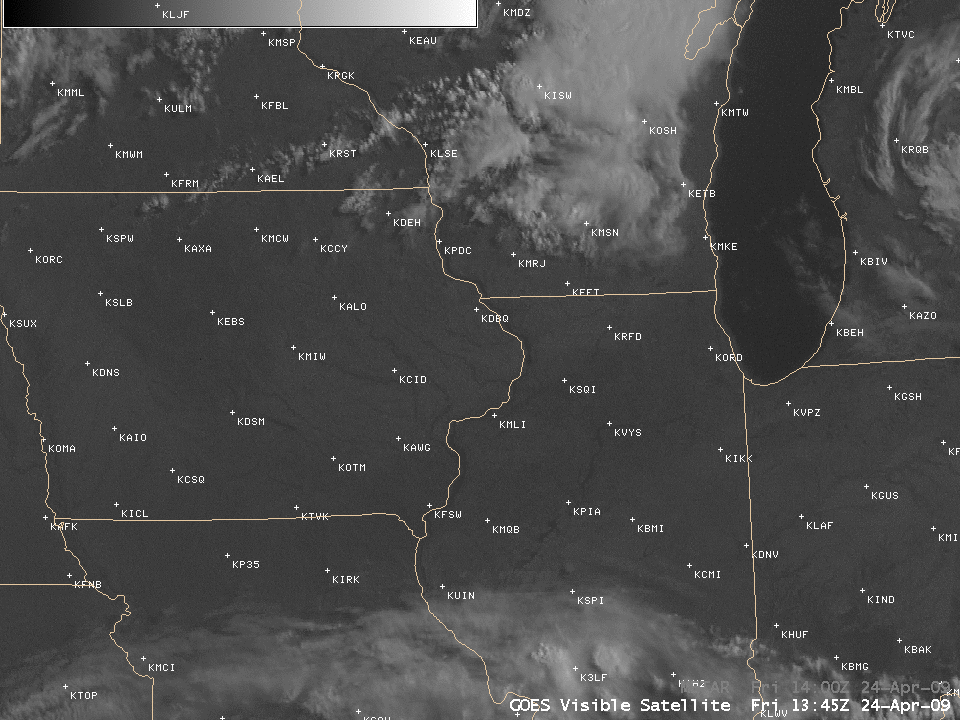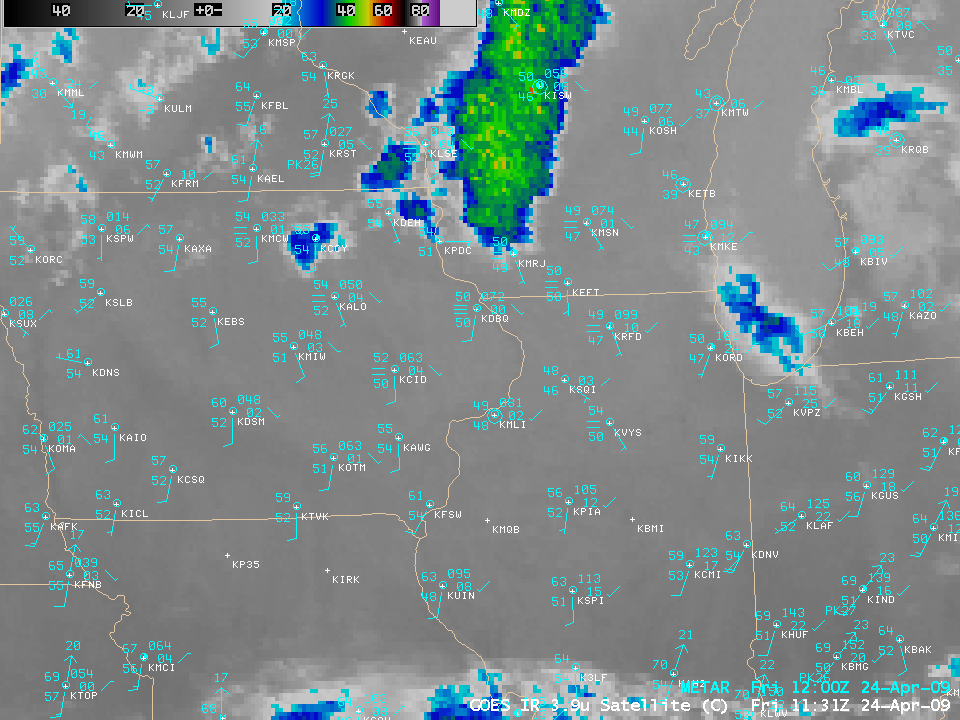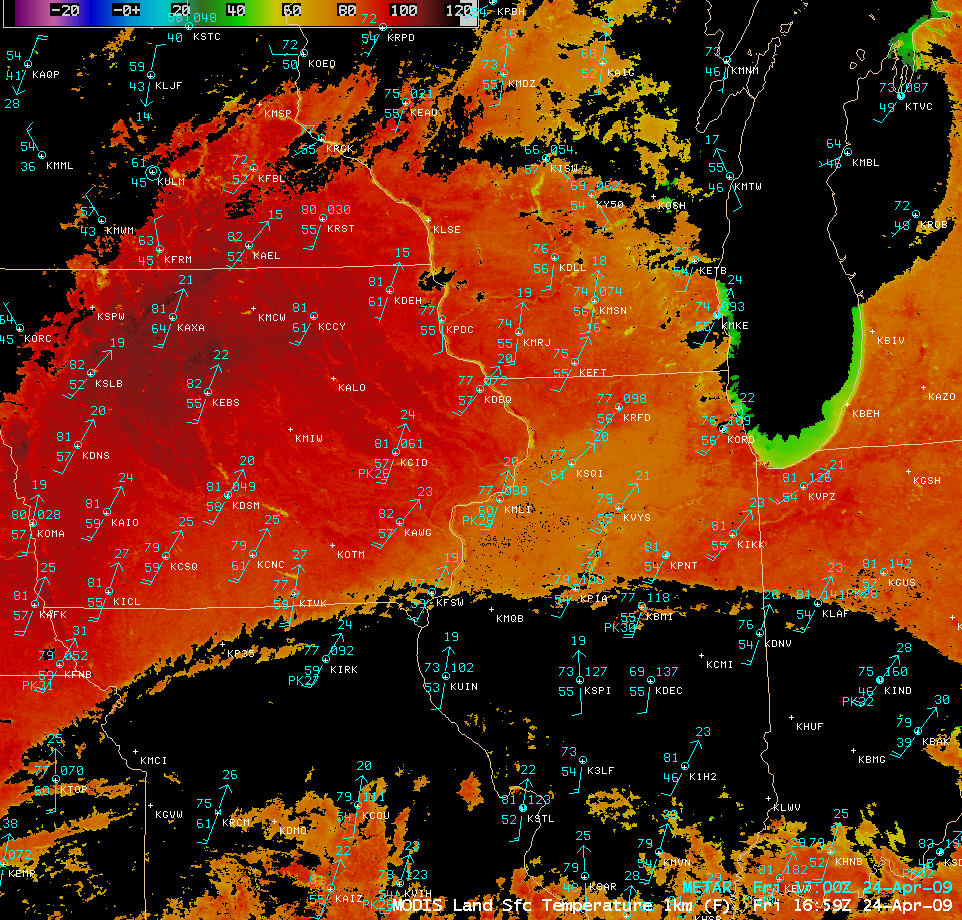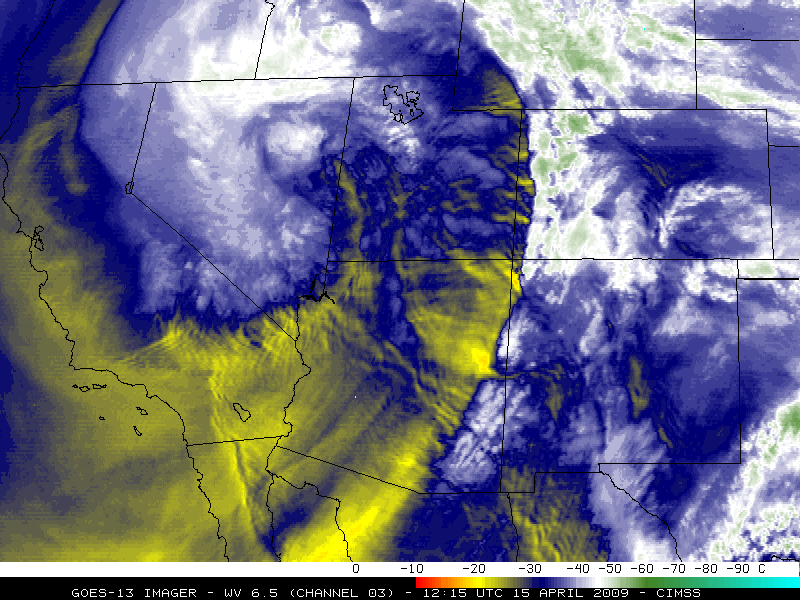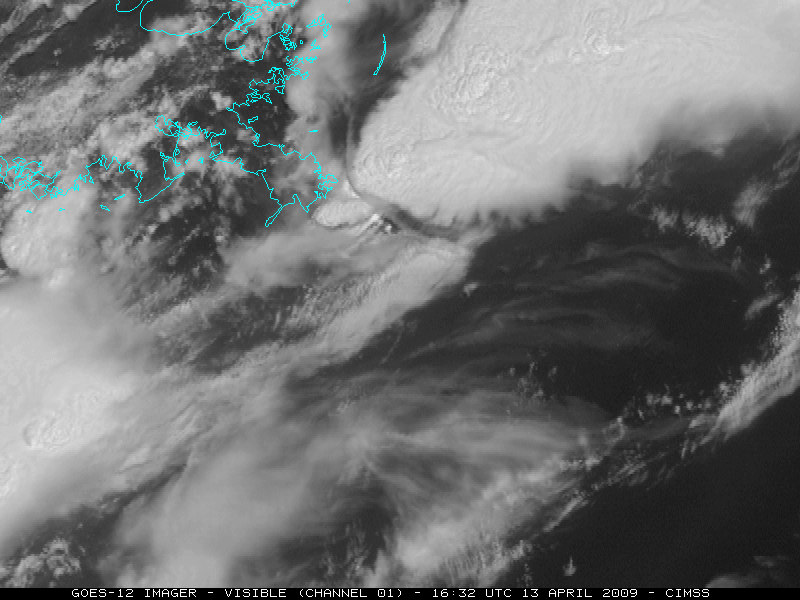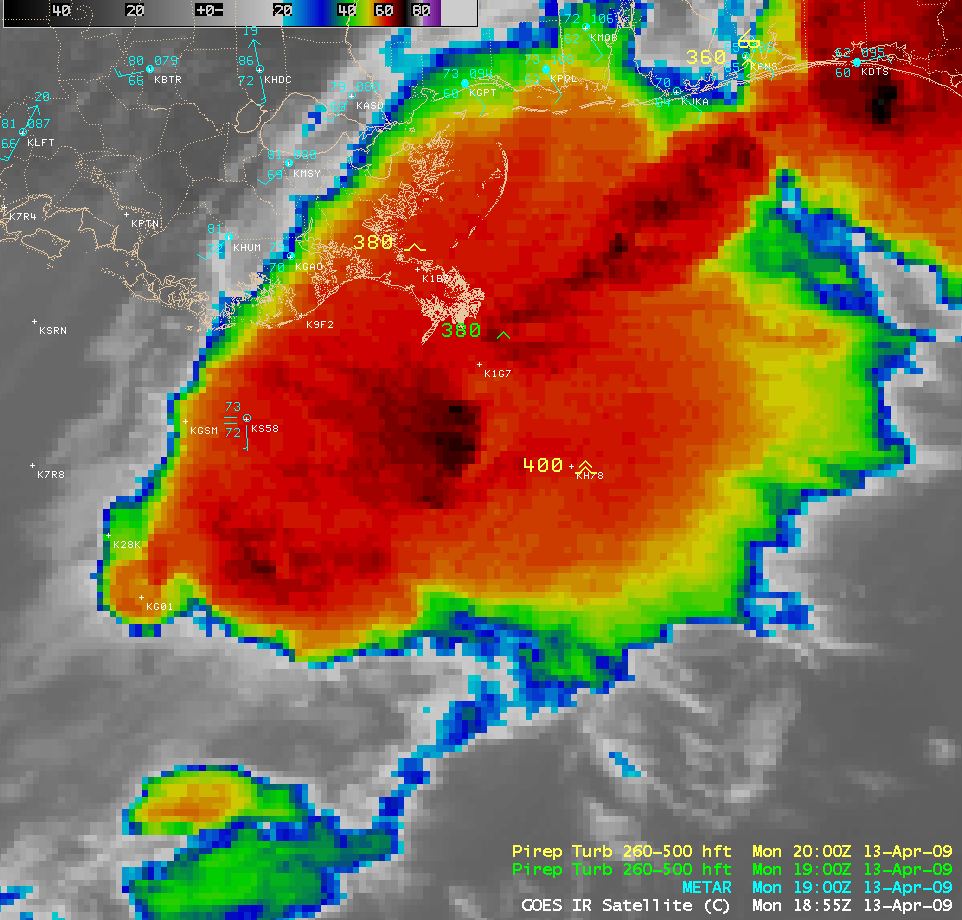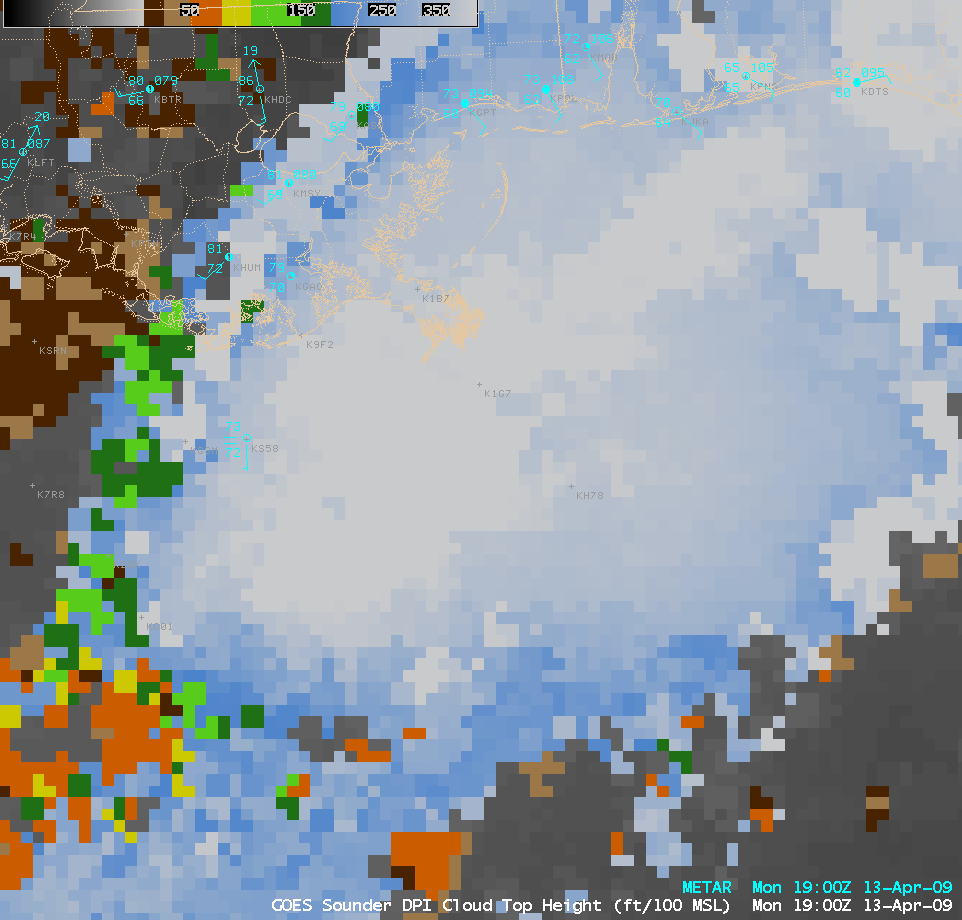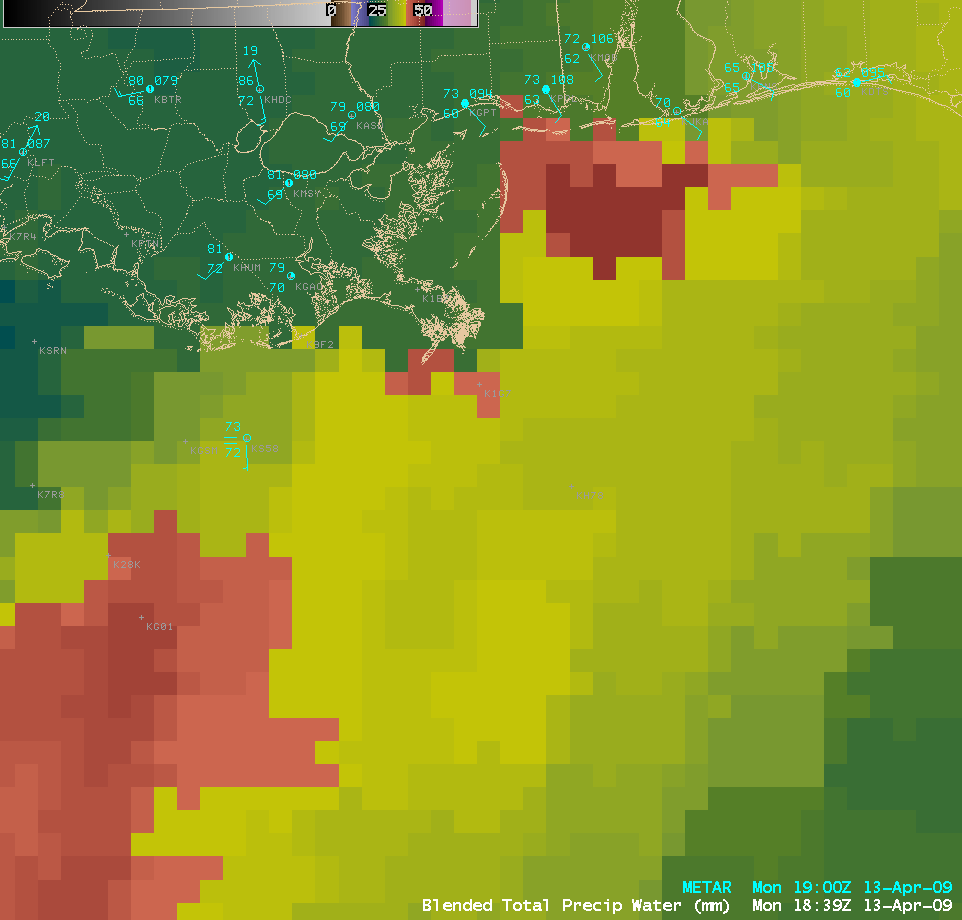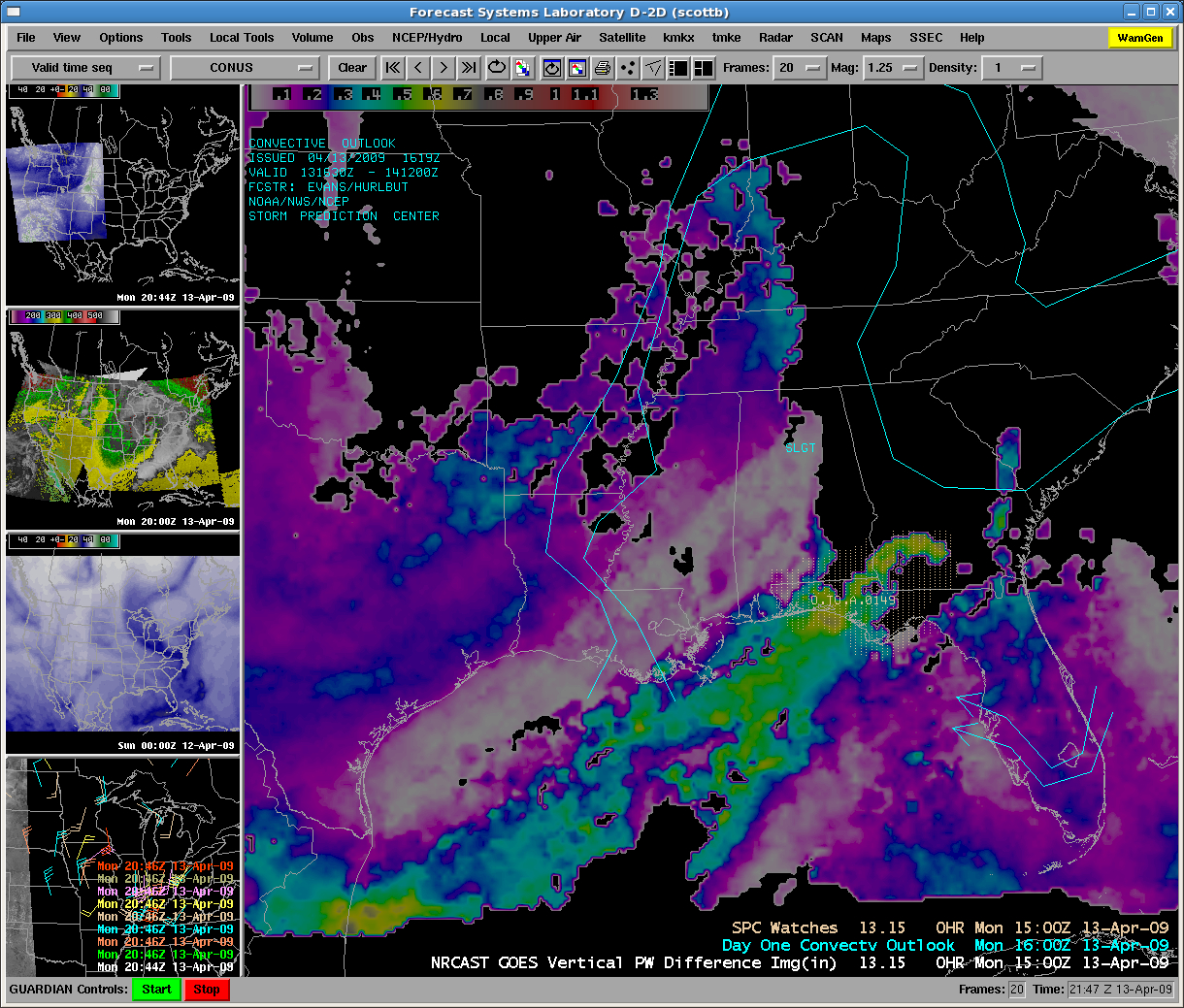Fires in coastal northeastern South Carolina, (news links here and here, for example) near Myrtle Beach, have destroyed 70+ houses and forced residents to evacuate. A true-color MODIS image that shows the distinct smoke plume is available here.
The fires were visible from satellite in both the visible channels, as shown above, and in the near-infrared channels. MODIS imagery in the 3.7-micron channel shows hot spots where the peat and brush fires are active. The character of the radiation emitted by the fire is a function of the temperature, as described by Wien’s Law, with higher emitting temperatures leading to shorter wavelength emissions (as described graphically by this applet. Note in the applet how the wavelength of the peak emitted radiation decreases as the temperature increases; a fire burning with a temperature of 700-800 F will have peak emissions near 3.9 microns).
The near-infrared channel (3.9 microns) on the GOES imager is more sensitive to fire detection than the far-infrared channel (10.7 microns) in part because of the great increase in near-infrared emission that occurs as fires develop and mature. In the loop of GOES Imager information above (Visible, 10.7 micron and 3.9 micron, respectively), note the very dark (warm) pixels in the 3.9 micron image in the region of the fire. The warmest pixels have brightness temperatures of 318.5 K at 3.9 micron vs. 300 K at 10.7 microns. In comparison, both sensors have brightness temperatures of 290 K in the waters off the coast. The difference at hot temperatures arises from the enhanced 3.9 micron emissions due to the fires.
Fires are routinely monitored at CIMSS using GOES Imager data, principally visible data and the 3.9 and 10.7 micron channels. See this link for more information. The processed data for 1545 UTC on 23 April do indicated fires (red pixels) near Myrtle Beach (the color key is available here).
View only this post Read Less


